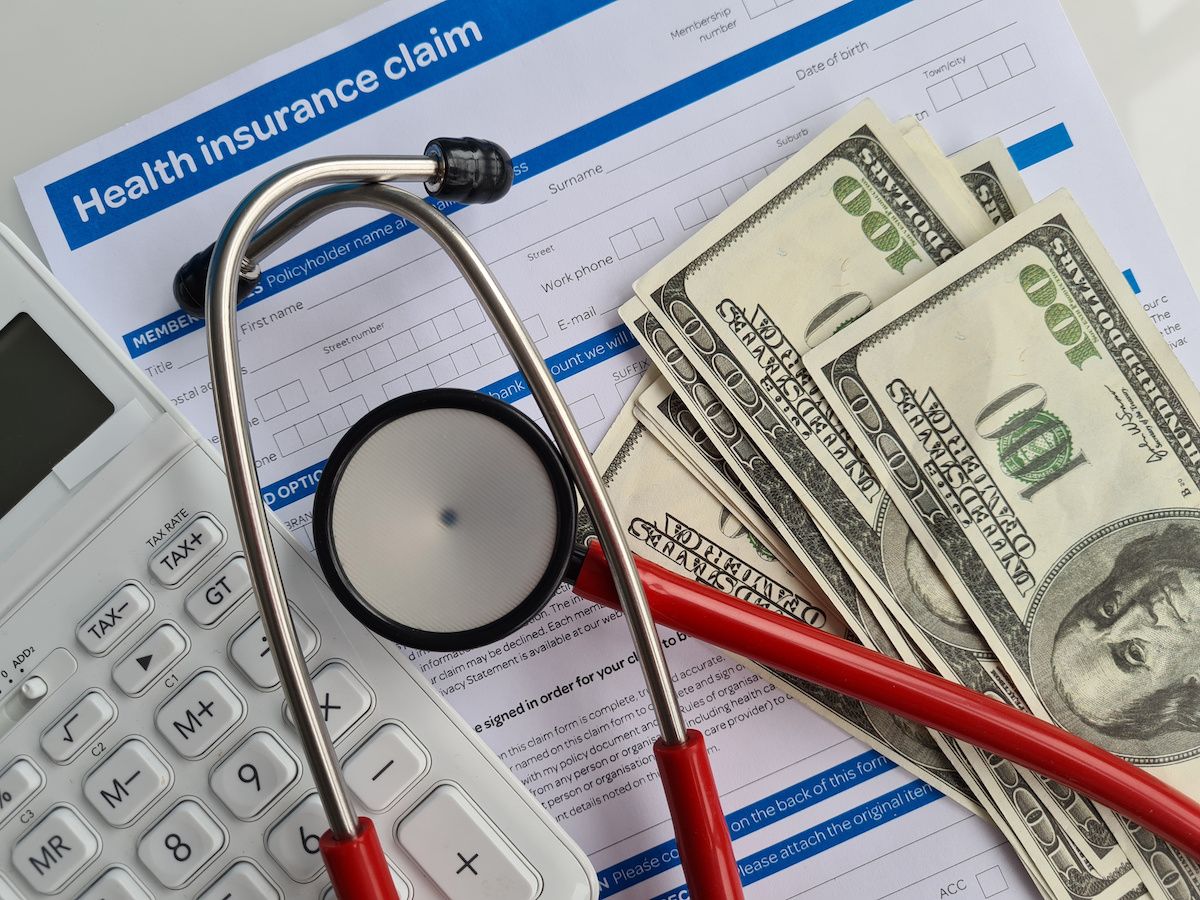News
Article
Targeted Programming Essential to Boost PrEP Coverage Worldwide
Author(s):
A trio of posters presented at AIDS 2024, the 25th International AIDS Conference, explored widespread disparities in access to pre-exposure prophylaxis (PrEP) and how to make access more equitable, both globally and locally.
Pre-exposure prophylaxis, or PrEP, is medication taken as a preventive measure against HIV. It is available in the US through 2 daily single-tablet combination pills—emtricitabine/tenofovir disoproxil fumarate (Truvada; Gilead)1 and emtricitabine/tenofovir alafenamide (Descovy; Gilead)2—and via injection every 2 months—cabotegravir (Apretude; ViiV Healthcare)3—and as a vaginal ring—dapivirine (Sever Pharma Solutions AB)—in several African countries.4
When taken correctly and consistently, research shows it to be 99% effective overall at reducing the risk of acquiring HIV, and 74% effective among persons who inject drugs.5
However, availability does not equal accessibility, as a trio of posters presented at AIDS 2024, the 25th International AIDS Conference, demonstrates. Two of these posters explored PrEP uptake in countries through international PEPFAR-supported programs,6,7 and a third poster investigated PrEP access in New York City.8 The US President’s Emergency Plan for AIDS Relief, or PEPFAR, came to be in 2003, and it has since expanded to more than 50 countries.9
These posters explore explored widespread disparities in access to PrEP and how to make access more equitable, both globally and locally. | Image Credit: magann-stock.adobe.com

PrEP Access Through PEPFAR
The first poster examined PrEP access in 49 countries across Central and South America, the Caribbean, Africa, Europe, and Asia that had distributed PrEP in the previous 12 months.6 The study period was October 1, 2022, through September 30, 2023. Using the ratio of individuals new to PrEP use vs the demonstrated need—their PrEP-to-Need ratio—across several categories, the investigators saw 1.7 million new HIV diagnoses and 1.9 million new PrEP starts.
Overall, there was a high degree of heterogeneity in the PrEP-to-Need ratio, with totals ranging from 0.07 to 4.38 among the 49 countries included in this analysis and 0.17 to 6.28 among certain populations of interest: female and male individuals aged 15 to 19, 20 to 24, 25 to 29, 30 to 34, 35 to 39, 40 to 44, 45 to 49, and 50 years or older, and female sex workers, men who have sex with men (MSM), transgender individuals, incarcerated persons, and injection drug users.
Colombia, Cameroon, South Sudan, and India fell into the lowest ratio range of 0 to 0.21—indicating a low degree of coverage according to need—while El Salvador, Brazil, Namibia, Zambia, Nepal, Vietnam, and Thailand fell into the highest ratio range of 1.85 to 4.38—indicating a high degree of uptake compared with the high degree of need. When stratifying the results by populations of interest, the top 3 groups with the highest PrEP-to-Need ratios for coverage were females aged 15 to 19 and 20 to 24 years (6.28 and 4.13, respectively) and female sex workers (4.08), while older individuals (35 years or older for male and female individuals) had the lowest levels of PrEP coverage despite a high degree of need, from 0.83 for those aged 35 to 39 years to 0.17 among those 50 years or older.
The authors note that although their findings represent disparities in PrEP coverage, they also highlight where there are opportunities to make positive changes in outcomes among older individuals through targeted programming efforts and policy updates on HIV prevention.
The second poster, too, covered need for PrEP, but this time focusing solely on programs in Africa,7 where more than half of the world’s new 1.3 million HIV infections occurred in 2022.10 Simultaneously, data show that only 25% of the 10 million individuals targeted through PEPFAR programs for PrEP received the HIV prevention medication. These investigators were seeking to understand the areas of greatest unmet need in 27 programs in Africa, and thereby stay on track to end HIV/AIDS as a public health threat by 2030.11
Fiscal year 2023 Monitoring, Evaluation and Reporting data were used for this analysis,12 with the authors also using the PrEP-to-Need ratio, as well as a confirmed positive HIV test as a proxy for a new HIV diagnosis. According to their results, those who initiated PrEP and those who received a new diagnosis of HIV were close to equal among the 27 countries: 1,674,282 and 1,652,401, respectively.
Again, Cameroon had a low ratio—the lowest, in fact—of 0.18, in stark contrast to Eswatini, which came in at 5.40. As previously stated, a higher total ratio indicates a higher degree of met PrEP need. The remaining results trend toward similarity to those from the investigation into the 49 countries.
Both female and male individuals aged 15 to 24 years had the highest PrEP-to-Need ratios, at above 8 and 11, respectively, when considering age and sex compared with older individuals (25-34, 35-49, and 50+ years) who had ratios that all came in below 5. Further, the older the age, the lower the PrEP-to-Need ratio. In addition, among the key populations evaluated in this study—again, female sex workers, MSM, transgender individuals, incarcerated persons, and injection drug users—vs the general population, all key populations had higher PrEP-to-Need ratios. Drilling down, the highest ratios were seen for MSM and transgender individuals, at approximately 13 and 16, respectively.
The investigators concluded, similar to the first poster’s authors, that their findings suggest there remains a lot of opportunity for integrated and targeted programming that focuses on prevention and increasing equitable PrEP access. Additionally, the PrEP-to-Need ratio can help to inform future policy decisions through evidence-based practice and it is a useful metric that can be used to gauge unmet PrEP needs.
PrEP Access in a US Health System
A team with NYC Health and Hospitals (NYCHH), which provides care to many marginalized populations within New York City, investigated PrEP coverage disparities by creating a flag for NYCHH’s electronic medical record that served as an indicator of potential risk for HIV and need for PrEP according to diagnosis of a sexually transmitted infection (STI) or repeated testing for STIs.8 Simultaneous with this was outreach to primary care, adolescent health, and women’s health clinics to expand PrEP coverage.
Criteria meant to trigger the PrEP-eligible flag included a patient being 13 years and older and not living with HIV, plus at least 1 of the following:
- Patients younger than 65 years: being diagnosed with an STI in the past year (gonorrhea, chlamydia, syphilis, and trichomonas), having at least 1 abnormal result with an STI test in the past year, at least 2 STI diagnoses in the last 2 years, and repeated lab tests for STIs or HIV in the past year
- Patients older than 65 years: repeated lab tests for STIs or HIV in the past year and having at least 1 abnormal result with an STI test in the past year
Results were compared between April 1 to September 1, 2022 (the preintervention period), and April 1 to September 1, 2023 (the postintervention period), and they defined an active PrEP prescription as a prescription filled in the previous 6 months.
Overall PrEP access jumped from 5.0% to 8.2% and 131 new PrEP prescriptions were initiated in the postintervention period. When missing data pertaining to gender identity and sexual orientation were considered, the rate of PrEP coverage similarly rose: from 4.6% to 7.9% for patients with an unknown gender identity and from 4.8% to 8.0% for patients with an unknown sexual orientation.
With the exception of cisgender male and transgender male individuals, outreach for PrEP increased all across subgroups in this NYCHH investigation:
- For race/ethnicity: Asian/Native Hawaiian/Pacific Islander, Black/African American, Hispanic, Native American/Alaskan, White, multiracial, something else, and missing
- For gender identity: cisgender female/male, transgender female/male, something else, and missing
- For sexual orientation: lesbian/gay/queer, bisexual, straight, something else, chose not to disclose, and missing
The largest jumps was seen among transgender females (36.4% to 61.9%) in the gender identity analysis, bisexual individuals (16.3% to 26.9%) in the sexual orientation analysis, and White individuals (22.6% to 34.4%) in the race/ethnicity analysis.
Their conclusions were that using STI diagnosis and testing for STIs and HIV was a reliable and effective method of identifying PrEP eligibility, and that these results can be used to identify missed opportunities for PrEP coverage, particularly among those for whom data on sexual orientation and gender identity are missing. As with the previous posters, too, these results demonstrate the importance of targeted interventions to scale up PrEP access across various populations.
References
1. What is Truvada? Prescribing information. Gilead; 2022. Accessed August 12, 2024. https://www.truvada.com/
2. Descovy. Prescribing information. Gilead; 2023. Accessed August 12, 2024. https://www.descovyhcp.com/
3. Apretude. Prescribing information. ViiV Healthcare; 2024. Accessed August 12, 2024. https://apretude.com/about-apretude/what-is-apretude/
4. Dapivirine vaginal ring. PrEP Watch. July 31, 2024. Accessed August 12, 2024. https://www.prepwatch.org/products/dapivirine-vaginal-ring/
5. Pre-exposure prophylaxis. HIV.gov. June 27, 2024. Accessed August 12, 2024. https://www.hiv.gov/hiv-basics/hiv-prevention/using-hiv-medication-to-reduce-risk/pre-exposure-prophylaxis
6. Yee R, Rowlinson E, Suraradecha C, et al; PrEP-to-Need Collaborators. HIV pre-exposure prophylaxis (PrEP) coverage by geography and population among PEPFAR countries, 2022–2023. Presented at: AIDS 2024; July 22-26, 2024; Munich, Germany. Poster EPC065. https://programme.aids2024.org/Abstract/Abstract/?abstractid=6013
7. Mukherjee T, Koluch M, Eyassu G, Abayneh SA, Herbst S. Disparities in PrEP use and unmet need across PEPFAR-supported programs in Africa: doubling down on prevention to put people first and end HIV as a public health threat by 2030. Presented at: AIDS 2024; July 22-26, 2024; Munich, Germany. Poster EPC071. https://programme.aids2024.org/Abstract/Abstract/?abstractid=7987
8. Kaplan-Lewis E, Casey E, Gala K, Li Z, Cohen GM. Actions to equitably expand PrEP in a municipal healthcare system. Presented at: AIDS 2024; July 22-26, 2024; Munich, Germany. Poster EPC073. https://programme.aids2024.org/Abstract/Abstract/?abstractid=10415
9. What is PEPFAR? HIV.gov. February 8, 2024. Accessed August 12, 2024. https://www.hiv.gov/federal-response/pepfar-global-aids/pepfar
10. UNAIDS data 2023. UNAIDS. 2023. Accessed August 13, 2024. https://www.unaids.org/en/resources/documents/2023/2023_unaids_data
11. Reimagining PEPFAR's Strategic Direction: Fulfilling America’s Promise to End the HIV/AIDS Pandemic by 2030. PEPFAR; September 2022. Accessed August 13, 2024. https://www.state.gov/wp-content/uploads/2022/09/PEPFAR-Strategic-Direction_FINAL.pdf
12. Monitoring, evaluation, and reporting indicator reference guide. PEPFAR. September 2023. Accessed August 13, 2024. https://help.datim.org/hc/article_attachments/21527004372884




